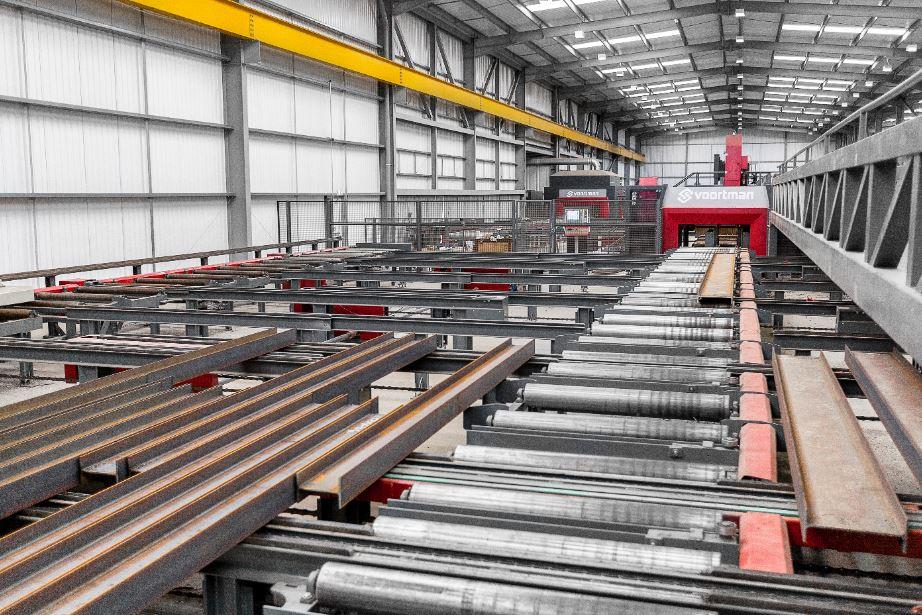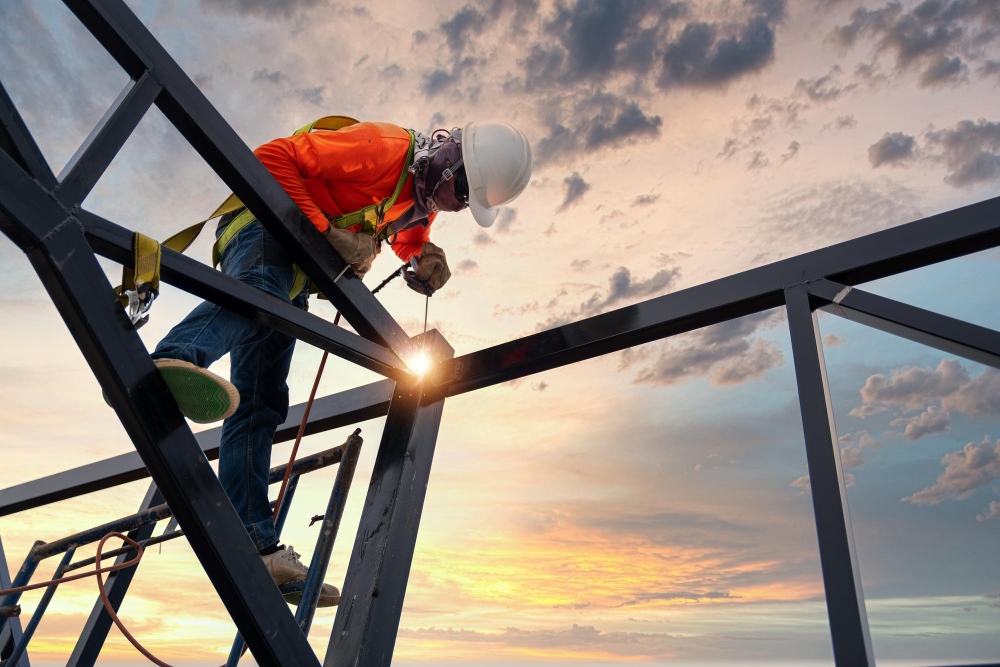Ingenious Fads in Steel Manufacture: Enhancing Resilience and Accuracy
In the world of steel fabrication, the pursuit of sturdiness and accuracy has actually led to a wave of cutting-edge trends that are reshaping the industry. These trends are not just forming the present but also laying the groundwork for the future of steel construction, guaranteeing more improvements in longevity and precision.
Advanced Welding Technologies
In the realm of steel fabrication, the adoption of cutting-edge welding technologies has substantially reinvented the sector's technique to attaining remarkable top quality and accuracy in structural welds. Advanced welding innovations, such as laser beam of light welding and friction stir welding, have actually become game-changers in the area. Laser beam of light welding utilizes a focused laser beam to sign up with steel elements with exceptional accuracy and speed, making it suitable for slim materials and intricate designs. On the various other hand, rubbing stir welding creates unbelievably solid bonds by mechanically intermixing the molecules of the materials at the joint, removing the requirement for melting the steel. These innovations provide various benefits, including lowered heat-affected areas, very little distortion, and boosted mechanical homes in the welded joints. By leveraging these innovative welding strategies, steel makers can boost the sturdiness, strength, and precision of their structural welds, meeting the increasingly demanding demands of modern construction jobs.
Robot Automation in Manufacture
Accepting robot automation has come to be a cornerstone of modern steel fabrication practices, streamlining procedures and enhancing performance throughout the industry. Robots are transforming the method steel elements are manufactured, providing unrivaled accuracy and speed while decreasing human error. These automated systems can take care of repetitive jobs with constant precision, leading to better final result.
One secret advantage of robotic automation in steel fabrication is the capability to work all the time without fatigue, dramatically enhancing production outcome. This constant operation decreases downtime and accelerates job timelines, inevitably saving prices for suppliers. In addition, robots can be programmed to perform intricate tasks that might be hazardous or challenging for human workers, boosting safety and security in the office.
Moreover, robotic automation makes it possible for seamless combination with various other digital innovations, such as computer-aided layout (CAD) software and Web of Points (IoT) systems (steel fabricators melbourne). This interconnected strategy enhances communication between various phases of fabrication, enhancing process and making certain real-time monitoring and control. As the steel construction market proceeds to advance, robotic automation stands apart as a transformative pressure driving effectiveness and accuracy in making procedures

High-Strength Alloy Growth
The advancement of high-strength alloy development in steel fabrication is reshaping the industry's approach to enhancing product durability and performance. High-strength alloys are crafted to show premium mechanical residential or commercial properties, such as enhanced tensile strength, toughness, and corrosion resistance contrasted to typical steel qualities. By integrating these advanced alloys right into manufacture procedures, producers can produce components that withstand greater anxiety levels and severe environments, leading to even more long lasting and trustworthy output.
One secret benefit of high-strength alloy advancement is the capability to decrease material density without jeopardizing structural honesty. This not only results in lighter-weight parts however also adds to cost financial savings and enhanced efficiency in manufacture and assembly procedures. The improved strength-to-weight proportion of these alloys enables for the layout and building of frameworks with higher load-bearing abilities while reducing total weight.
3D Modeling and Simulation Software
Innovations in steel fabrication procedures have been substantially propelled by the combination of cutting-edge 3D modeling and simulation software application devices. These tools enable makers to create in-depth digital models of their jobs, allowing them to visualize the final item with accuracy before any type More about the author of manual labor starts. By mimicing different stress and anxiety factors, environmental problems, and architectural lots, fabricators can enhance styles for boosted durability and performance. Furthermore, 3D modeling and simulation software program simplify the production process by determining prospective issues early on, decreasing the requirement for expensive rework and lessening product waste.

Lasting Practices in Steel Production
Including sustainable techniques into steel manufacturing processes is necessary for reducing ecological impact and making sure long-term source availability. One crucial lasting practice is the fostering of energy-efficient technologies to minimize greenhouse gas exhausts during the steel production process. This includes utilizing renewable energy resources, such as solar or wind power, to power steel plants and implementing energy-efficient devices to maximize energy usage.
One more crucial element of lasting steel manufacturing is the responsible sourcing of resources. This entails ensuring that the iron ore and other resources utilized in steelmaking are acquired from eco friendly and ethical sources. By promoting openness in the supply chain and sticking to rigorous ecological standards, steel producers can lessen the negative impacts of resource extraction on regional ecological communities and communities.

Conclusion
To conclude, the cutting-edge fads in steel construction such as sophisticated welding technologies, robot automation, high-strength alloy growth, 3D modeling and simulation software application, and sustainable techniques are improving the sturdiness and precision of steel items. These improvements are transforming the steel fabrication sector by enhancing effectiveness, sustainability, and quality. It is clear that the future of steel construction depends on accepting these cutting-edge innovations to satisfy the demands of modern-day building and production markets.
In the world of steel fabrication, the search of sturdiness and accuracy has led to a wave of cutting-edge trends that are improving the sector.In go the realm of steel manufacture, the adoption of innovative welding modern technologies has dramatically revolutionized the industry's strategy to accomplishing remarkable top quality and accuracy in architectural welds. As the steel fabrication market proceeds to evolve, robotic automation stands out as a transformative pressure driving performance and precision in producing procedures.
In addition, recycling and reusing steel scrap and waste products play a significant function in improving the sustainability of steel manufacturing. steel fabrication melbourne.In verdict, the cutting-edge trends in steel fabrication such as sophisticated welding innovations, robot automation, high-strength alloy growth, 3D modeling and simulation software, and sustainable practices are enhancing the toughness and accuracy of steel items